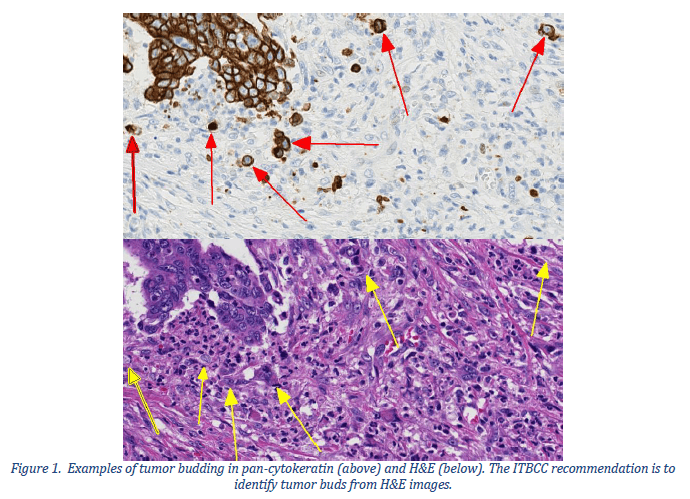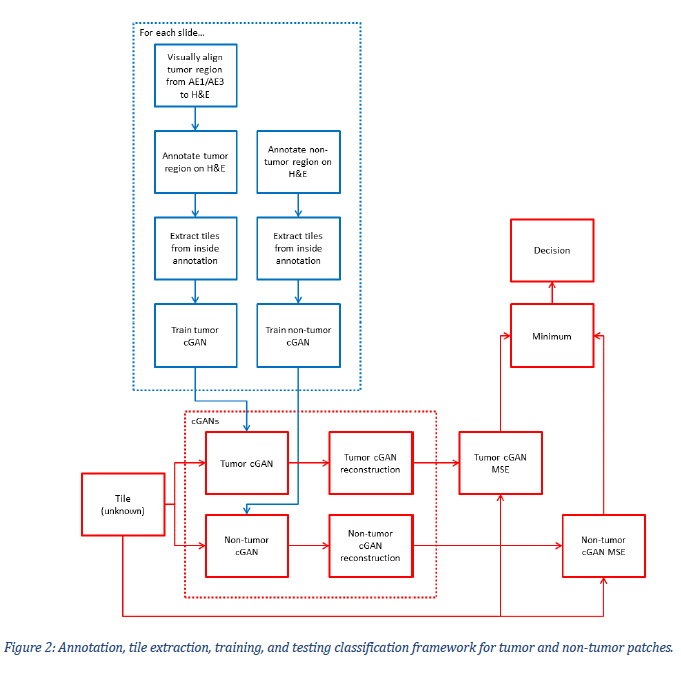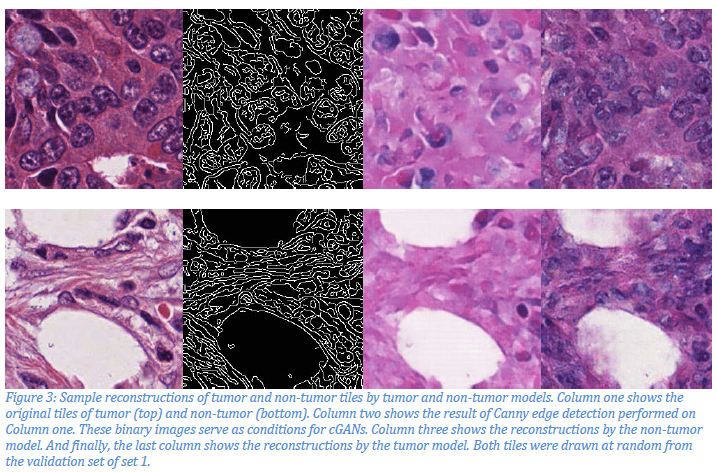Current Findings
We proposed an automated image analysis framework to take advantage of the visual superiority of pan-cytokeratin and the routine use of H&E to detect and quantify tumor budding. Insofar, our framework has demonstrated excellent ability to identify tumor regions of colorectal slides – 92% accuracy and 94.5% sensitivity – across four independent datasets. In tandem with a nuclei detection algorithm, our framework will be able to reproducibly detect tumor budding and eventually determine its prognostic significance in colorectal cancer.
Next Steps
With successful modification of the training process or a different measure of reconstruction similarity (like earth mover distance), classification of tiles can be translated into segmentation of tumor and non-tumor regions using a sliding window. To avoid overfitting, we will develop an early-stopping condition based on the convergence of the generator and discriminator. Additionally, to increase ability to generalize, we are currently in the process of getting a larger tumor budding dataset (approximately 100 slides). In tandem with nuclei detection, we will be able to identify tumor budding in H&E images. We will test different methods of measuring and stratifying tumor budding.
Eventually, we will correlate these results with various clinical and pathological outcomes to provide quantitative evidence as to tumor budding’s value a prognostic factor.



Contributors
Thomas E. Tavolara, Muhammad Khalid Khan Niazi, Wei Chen, Wendy Frankel, Metin N. Gurcan
